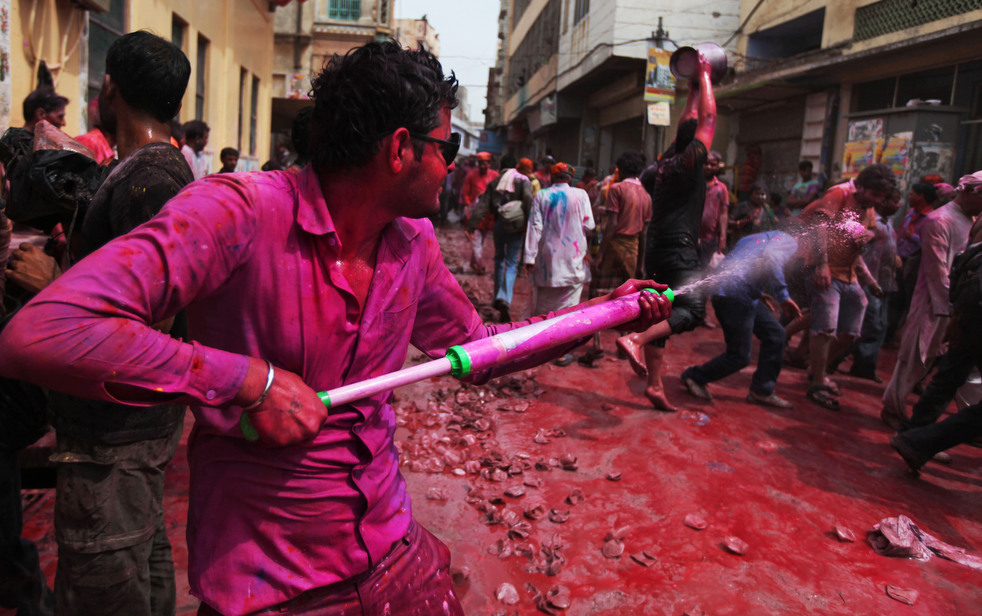The festival of colors Holi, India
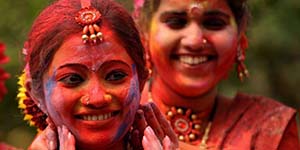
Every spring in India is the festival of Holi-a celebration of the arrival of spring and new life.
The festival is usually held in late February-early March and lasts for two days. Many tourists consider the festival of colors Holi is one of the most exciting and amazing events, which can see tourist India.
And in some ways they are right – a huge number of different powder coatings is that they throw everyone who is during Holi in the street is really able to paint in bright colours even the most gray days.
The festival of colors. More color!
But in addition to decorative functions, it is a colorful abundance has a healing effect – vegetable dyes-powders are quite useful and help to strengthen immunity, consider the Ayurvedic healers, and participate in the ritual of Holi will be able to protect from all the spring diseases.
It is believed that the stronger during the festival of Holi dirty to you in multi-colored paint, the more and more generous will be to you the gods this year, so these days on the streets of Indian cities you will not find a single person in a more or less clean clothes.

And then it does not matter, I wanted you to take part in this noisy festival of colors or just passed by – celebrating definitely will generously share with you wishes of good luck, good health and blessings of the gods, expressed during the Festival in the form of a handful of colors.
Therefore, during the celebration of Holi is not worth going outside to dress elegant – comfortable clothing that will not mind then throw it, would be more appropriate, because how can you stay away when there is such an irrepressible celebration of life?

Where did the festival of Holi?
With regard to the history of the origin of the holiday, there are a few legends associated with the festival of colors Holi. One of these legends tells the story of Holika – the demon from Indian mythology. Holika, the sister of the evil king Hiranyakasipu, was a divine blessing that he granted her invulnerability to fire. Persuaded Demoness devoted to God Vishnu, Prahlada, the son of Asura Hiranyakasipu, went on a funeral pyre in honor of the deity, but a miracle happened, and Holika was burned and blessed Vishnu, Prahlada emerged from the fire unharmed.
Since then this day is considered in Hinduism as the day of the arrival of spring, and the burning of effigies of the evil Holika is one of the rituals of celebrating the festival of colors. For the Slavic version of the origin of the festival of colors associated with Holiday, and the ritual burning of effigies are usually pretty close, because it is very similar to the customs of the celebration of carnival.
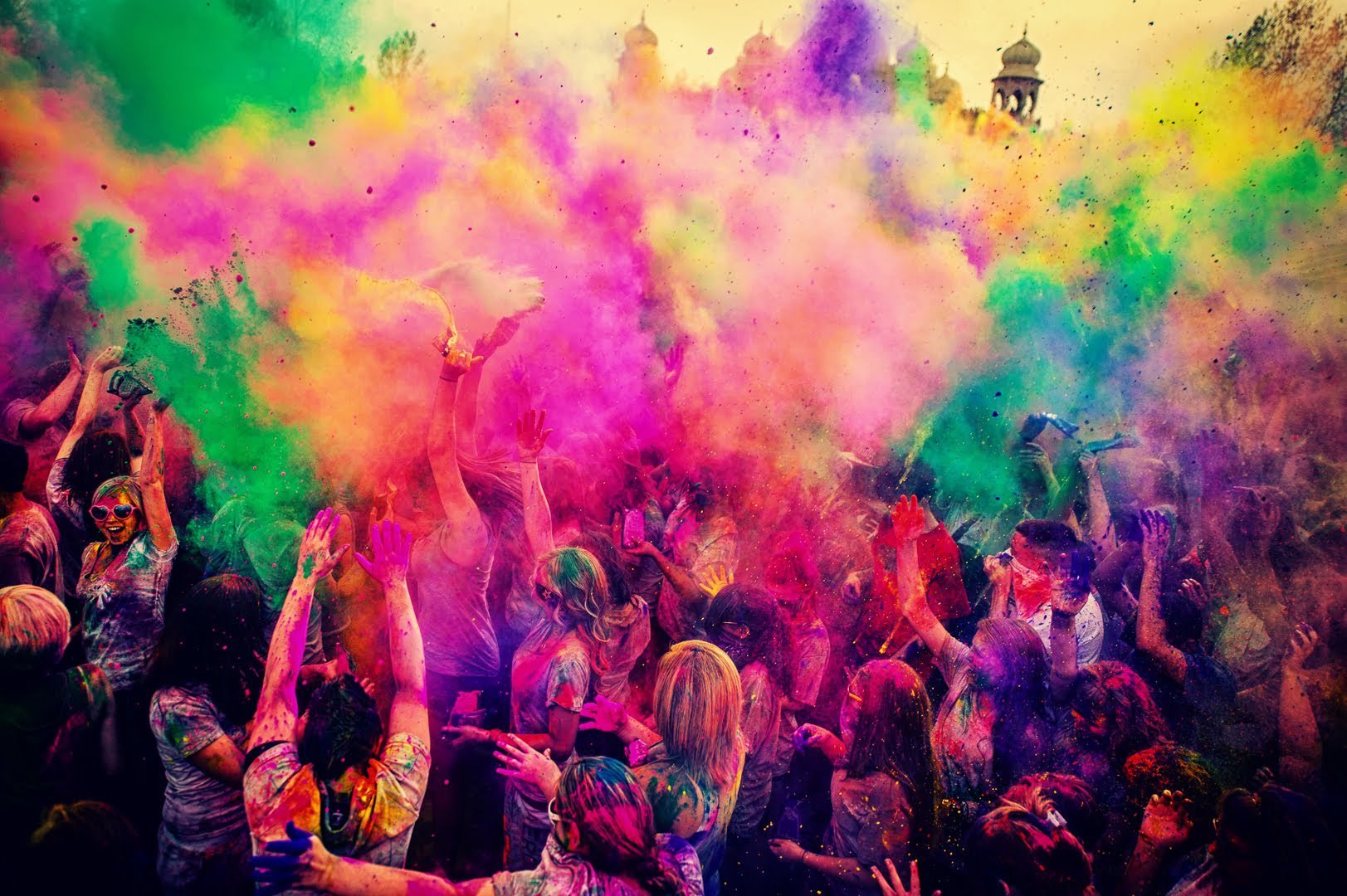
But the celebration of Holi is also associated with one more episode-with the story of how Lord Shiva incinerated his third eye the God of love Kama, because he was trying to break the divine meditation. Then Kama was incorporeal, but, having listened to the request of Parvati, Shiva's wife, goddess and Rati, wife of Kama, Shiva agreed to return to Kame his body. Since then, the Indian God of love Kama, takes its physical shell is only 3 months out of the year, and it was at this time in the world spring comes, everything is blooming and people are happy, celebrating joyous holiday of love.

Features of the celebration of Holi
And if the Indian festival of Diwali usually takes place in the abundance of sweets on the festive table, the festival of colors Holi has its own signature treats – tanday with the addition of bhanga (cannabis). And if the ritual osypanie paints all involved – not from the elderly to very young children, refreshments bhanga-this is a mandatory religious ritual for the adult population.
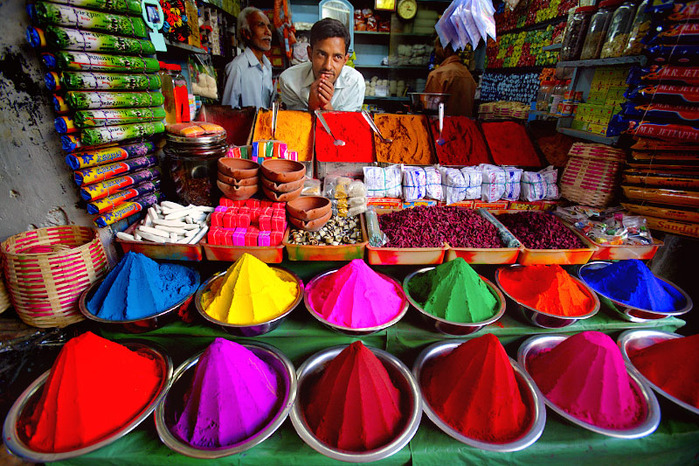
Traditional milk drinks with added sugar, spice marijuana and more – the juice or crushed leaves called bhang-Lassi. This drink is usually served on the day of Gaura Purnima-this festival dedicated to the phenomenon of Gauranga, who founded about 500 years ago, the Sankirtana movement – it is the worship of the gods through their chanting of the Holy names.
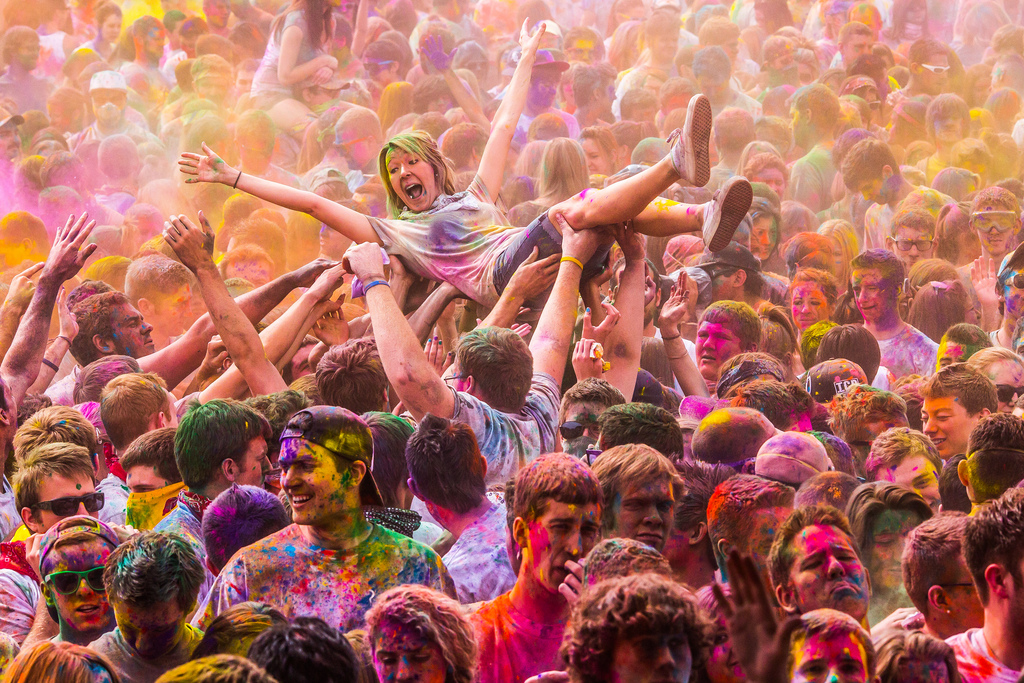
When is it? Holi Festival in 2014 falls on March 17.
Where? in the tourist cities of India, and in non-touristy towns and villages. In some places foreigners are not sprinkle paints on the streets, but in some places, for example, in Goa, tourists can start aiming to throw colored water and a sprinkle of coloring powders.
